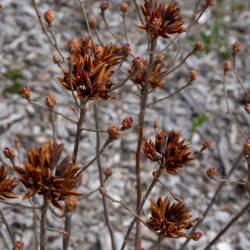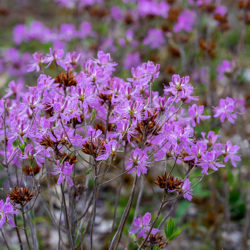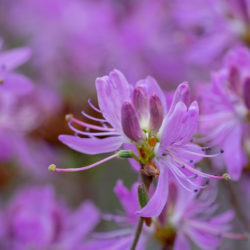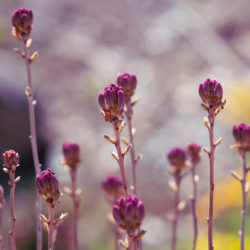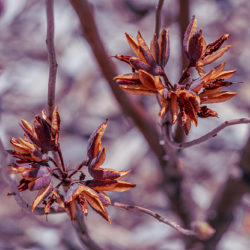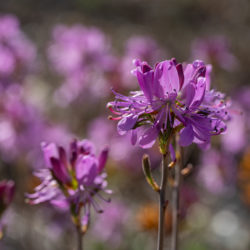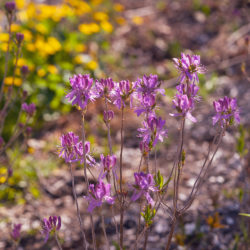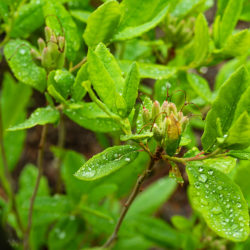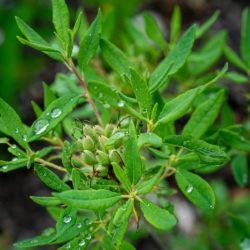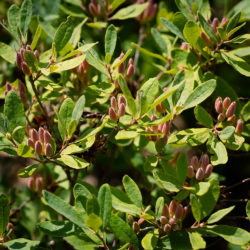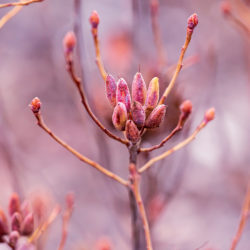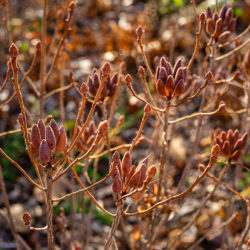Etymology
Rhododendron is Greek for rose-tree; canadense is Greek for northern in origin.
Native Habitat
Coniferous or mixed coniferous-deciduous forests, thickets, open rocky areas, lake margins, bogs and swamps.
Garden Uses
Early color in acidic wetlands.
Overview
This small (about 3 foot high), deciduous shrub is found throughout Maine brightening sunny wetlands with its bright pink-lavender flowers early in spring, before its leaves emerge. It prefers cold, wet, acidic, peaty soil.
Leaves and Stems
This shrub has multi-stemmed, thin, sparse branches with peeling, smooth bark that is brown to reddish. Its leaves are grey-green, oblong, simple, smooth and stemmed. The leaves grow singly, up to 3 inches in length, and their undersides are hairy.
Flowers
Flowers are rose-purple and grow in terminal clusters of 2-6 prior to leaf emergence. Unlike other rhododendrons, these flowers are not trumpet shaped. Instead, the 3 upper petal-like lobes are erect and almost unite, while the 2 lower lobes are divided and spreading. Each flower is approximately 1 inch in diameter, and has an unusual 10 stamens. Buds for the next year form post-bloom and are scaled, overlapping like shingles.
Fruit/Seed
Tiny seeds mature in small (1/2-inch) orange-brown capsules.
Animal Associates
This shrub is a host plant for the larva of Columbia silk moth (Hyalophora columbia). Its flowers are attractive to early bees. Rhododendrons are poisonous to animals and humans, and even its honey should not be ingested.
Propagation
Seeds can be sown in peat, under mist or plastic tents.
Ethnobotanical Uses
None found.
Garden Location
Library Garden (see garden map)
Anecdotal Information
A historic icon of New England wetlands, this species inspired poetry from Emerson. Rhodora is the name of the New England Botanical Club’s scientific journal.
Sources
Lady Bird Johnson Wildflower Center
Plant Profile by Kate O'Dell

